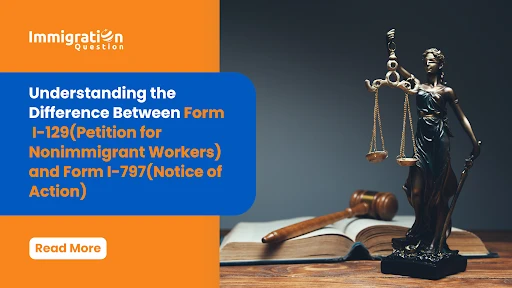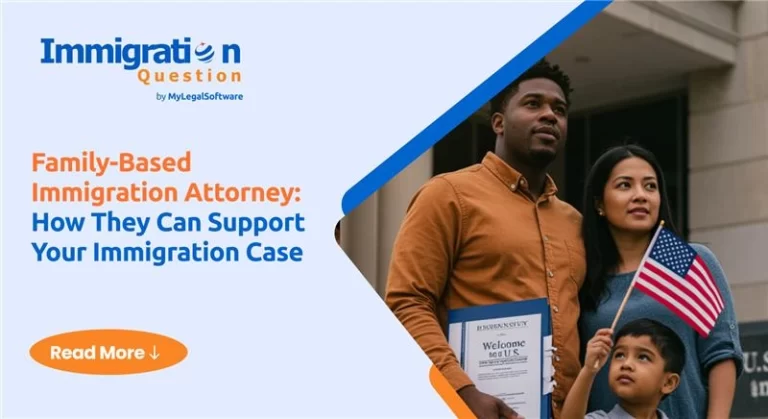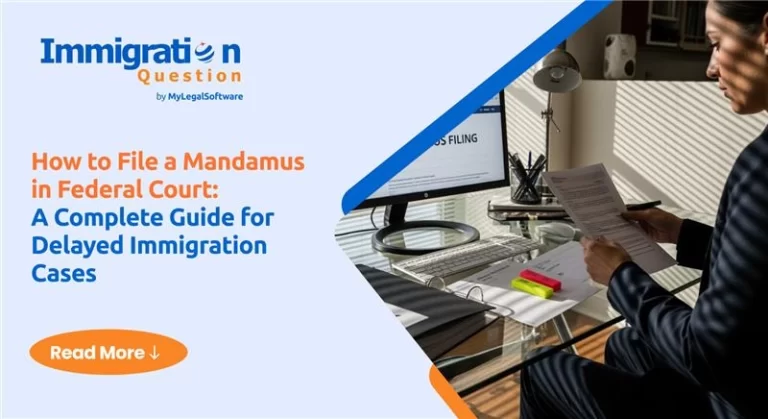Immigration applications are a complex procedure. Usually, they require filing a number of distinct forms with code names that make them a bit hard to recall or differentiate. One such case is Form I-129 and Form I-797. It is crucial to understand the difference between these forms. While each serves a different purpose, they’re often confused. The Form I-129, otherwise known as ‘Petition For a Nonimmigrant Worker,’ is designed for nonimmigrants.
It is filed by a U.S. employer to petition for a foreign worker’s temporary employment in the United States. Form I-797, on the other hand, is a Notice of Action issued by USCIS in response to various immigration-related applications, requests, or petitions, including Form I-129.
In essence, while the I-129 petitions or requests that a foreign national be granted permission to work temporarily in the United States, the I-797 is simply the response put out by the USCIS to signal that this request has been noted and the I-129 or any such immigration request will subsequently be acted upon. There are other differences between the Forms I-129 and I-797. In this guide, you’ll learn how to identify each form, focusing on their purpose and differences.
Form I-129 – Petition for a Nonimmigrant Worker
The Form I-129 (Petition for Nonimmigrant Worker) is a document designed for U.S.-based employers which allows them to petition the United States Citizenship and Immigration Services (USCIS) to sponsor a foreign national for temporary work in the U.S. Other than issuing a new status to foreign nationals, the form I-129 may also be used to update the status of an existing visa. This includes using the form I-129 to extend one’s stay or granting certain rights to foreign nationals who live in the U.S. on a nonimmigrant visa but seek work authorization.
While the U.S.-based employer must file the petition on behalf of the foreign national, an agent may also be permitted, in some cases, to file Form I-129 on behalf of the employer.
Purpose of Form I-129
- Extending the status of a qualified foreign national employee already resident in the U.S. on another nonimmigrant visa category.
- Amending an already approved employment of a foreign national when his or her title, job duties, or salary changes.
- Sponsoring a foreign national who does not live in the U.S. but could apply for a corresponding nonimmigrant work visa at the U.S. consulate in their home country after getting approval of an I-129 petition.
- Changing the immigration status of a foreign national currently present in the U.S. in a different non-immigrant category.
Who can use Form I-129?
- Temporary workers are eligible for H-1B, H-1C, H-2A, or H-3 visas.
- Foreign nationals qualify for O-1 visas due to their extraordinary abilities and those who assist them so long as they satisfy the conditions of an O-2 visa.
- Foreigners with P class visas, such as P1, P2, and P3, include athletes, entertainers, and artists, among others, with their supporting staff if they are on a P1S, P2S, or P32 visa.
- Cultural exchange employees who are eligible for Q-1 status.
- Religious employees who are eligible for R-1 status.
Alternatively, Form I-129 can be used to extend the status of individuals in the United States on E-1, E-2, and TN visas.
Process For Filing Form I-129
Form I-129 is 36 pages long, including eight pages for the main form and supplements, some of which do not apply to all cases. Although the Form I-129 can be lengthy and comprise many different sections, it is not the beneficiary’s responsibility to file it. Instead, it is a U.S.-based employer. The USCIS further provides a separate 29-page instruction guide on how to fill out Form I-129 to help petitioners and beneficiaries.
You can click here or go to the USCIS website for links to “instructions for form” and Form I-129. Complete the Nonimmigrant Worker Petition form accurately and clearly. Even if the petition is approved by USCIS, problems may still arise for beneficiaries if it contains incorrect information. When all the relevant details have been provided, a person authorized by the employer, like a company-appointed lawyer, can sign the document. Note that all signatures must be made using black ink.
Form I-797 – Notice of Action
The government sends the Form I-797 (Notice of Action) to persons who recently filed a U.S. visa application. It is a response notifying the applicant or petitioner that their application has been received and is either approved or processed. As long as you get involved in the immigration process, you will receive a Form I-797. Some reasons why you may receive the I-797 include:
- Submission Receipt: Once USCIS receives your immigration application, you will receive a Form I-797. This form proves that your papers have been received and are being processed.
- Petition or Application Approval: You may receive an I-797 if your petition or application is approved by USCIS. This means you have been granted the immigrant benefit you applied for, such as a visa, green card, or employment authorization document.
- Biometrics or Interview Request: If you have to take biometrics or have an interview during your application process, you will receive a Form I-797.
- Work Permission or Travel Documents: An I-797 can confirm that one can work or travel pending when their immigration case is determined. The Form I-797 validates this authorization.
- Change in Processing Location: Sometimes, USCIS may transfer cases to a different service center for processing. The new processing location and whether it affects the time it takes will be communicated through Form I-797.
- Case Reopening/Reconsideration: USCIS may seek an additional review of your case, which could also lead to the issuance of a Form I-797. To provide more insight, details on why they are reopening will be communicated with the form.
What do the Different Types of Form I-797 mean?
The form I-797 exists in several forms, each with a different use in the U.S. immigration process. The following are the main types and what they mean:
- I-797 (Notice of Action): USCIS uses this as a general notice to communicate all sorts of decisions, requests, and updates. It may acknowledge an application receipt, notify the applicant of approval, demand further evidence, or inform them about a scheduled interview or biometrics appointment.
- I-797A (Notice of Action): This is given to applicants already in the U.S. whose status has been extended or changed. It is issued after an extension or change of status has been approved and the applicant can legally remain in the U.S. Usually attached at the bottom of the form is a new I-94 Arrival/Departure Record that is important for proving lawful presence and status in the U.S.
- I-797B (Notice of Action): This notice is often issued in response to petitions for employment-based visas, such as the H-1B. It is used when the beneficiary is outside the U.S. and does not include an I-94. The beneficiary must visit a U.S. consulate to obtain a visa stamp.
- I-797C (Notice of Action): This notice is used for many different things, such as acknowledgment of receipt, denial due to errors, file transfer, reopening cases, and biometrics for interview appointments.
- I-797D: This notice is a cover letter for certain benefit cards, such as green cards or employment authorization documents (EADs), sent to applicants by mail.
- I-797 (Notice of Action): This is a Request for Evidence (RFE). This means the USCIS needs more information or papers to process the application/petition further. Failure to respond within the stipulated time typically leads to a denial.
- I-797F (Transportation Letter): This is issued to lawful permanent residents (green card holders) returning to the U.S. without their green card, allowing them to board flights to the U.S.
Key Differences Between Form I-129 and Form I-797
The key differences between the Forms I-129 and I-797 include:
- Purpose: While the I-129 is used by U.S.-based employers to petition for foreign nationals to work temporarily in the U.S. as nonimmigrants, the I-797 is a notice form used by USCIS to communicate to applicants or petitioners that a particular action is being taken in respect to their application.
- Sponsor: While the I-129 is filed by U.S. employers (petitioners) on behalf of foreign workers (beneficiaries), the I-797 is typically issued by USCIS to applicants, petitioners, and sometimes beneficiaries to notify them of the status of their application or petition.
- Specific functions: While the I-129 petitions for temporary workers in nonimmigrant categories and features details about the job, the employer, and the foreign national worker, the I-797 is a more versatile notice that indicates any of these:
- Receipt of an application or petition.
- Approval or denial of a petition.
- Requests for additional evidence.
- Notifications of scheduled appointments.
- Delivery of immigration benefits like the U.S. green card.
- Type/form: While the I-129 has only one standard form with various supplements depending on the visa category being petitioned for, the I-797 has multiple types, each serving a different purpose.
- Usage Context: While the I-129 is used primarily in the employment-based nonimmigrant visa process, the I-797 is used across several stages of the immigration process, including initial receipt, approval, requests for additional documentation, and final benefit issuance.
Understanding the Difference Between Form I-129 and Form I-797
1. What is the main purpose of Form I-129?
The main purpose of the I-129 is to petition for a foreign worker’s temporary employment in the United States. This is often done by the would-be U.S. employer.
2. Who needs to file Form I-129?
Eligible temporary workers, foreign nationals who are qualified for O-1 visas, foreigners with P class visas along with qualified support staff, cultural exchange employees who are eligible for Q-1 status, religious employees who are eligible for R-1 status, etc.
3. What is Form I-797 used for?
The Form I-797 is a response that notifies an immigration applicant or petitioner that their application has been received and is either approved or being processed.
4. What is the difference between I-797A and I-797C?
The key difference between these two forms is that while the I-797A is given to applicants who are already in the U.S. as a notification that their change of status has been approved and that they can legally continue to remain in the U.S., the I-797C can either be an acknowledgment of receipt, denial due to errors, transfer of files, reopening of cases, or biometrics for interview appointments notice.
5. How do I know if my Form I-129 has been approved?
You will receive a Form I-797 to that effect.
6. What should I do if I receive a Form I-797C rejection notice?
If you receive a Form I-797C, your best option would be to find a lawyer to help you with the case.
7. Can Form I-797 be used for travel?
The I-797 is not a travel document but can be used to obtain a visa from the U.S. consulate abroad for entry to the U.S.









